


GEORGE WASHINGTON 1732 -
xxxxxGeorge Washington, the first president of the United States, gained his fighting experience during the French and Indian War in the 1750s and 1760s, when leader of the Virginia militia. As a member of the local legislature he opposed Britain's colonial policy, and when the American War of Independence broke out in 1775, he was appointed commander of the continental armies. With a shortage of experienced fighters and insufficient arms, food and clothing for his men, his problems were immense, but he showed a great deal of courage and determination and, despite severe hardship, kept the army together as a fighting force. He gained Boston from the British in 1776, but then lost New York and was driven into Pennsylvania. From here he won victories at Trenton and Princeton, but then suffered reverses at Brandywine and Germantown. When the British withdrew to the north, he took up a position outside New York and it was from here that he moved his forces to Yorktown, besieged the city, and received the British surrender in 1781. As we shall see, he re-
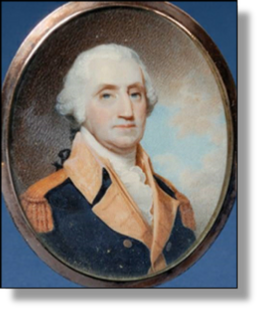 XxxxxThe “father” of the United States was George Washington, commander of the American forces during the War of American Independence, and the nation's first president. He began his fighting career during the French and Indian War, beginning in 1754, when he was leader of the Virginia militia. As a member of the local colonial legislature, he fiercely opposed the British government's policy towards its American colonies, and attended the Continental Congress, convened in 1774 to petition King George III and the British parliament. When war with the mother country eventually broke out in 1775, he was appointed commander in chief of the Continental armies and, despite many reverses, problems and harrowing times, led his “country” to victory with the British surrender at Yorktown in 1781.
XxxxxThe “father” of the United States was George Washington, commander of the American forces during the War of American Independence, and the nation's first president. He began his fighting career during the French and Indian War, beginning in 1754, when he was leader of the Virginia militia. As a member of the local colonial legislature, he fiercely opposed the British government's policy towards its American colonies, and attended the Continental Congress, convened in 1774 to petition King George III and the British parliament. When war with the mother country eventually broke out in 1775, he was appointed commander in chief of the Continental armies and, despite many reverses, problems and harrowing times, led his “country” to victory with the British surrender at Yorktown in 1781.
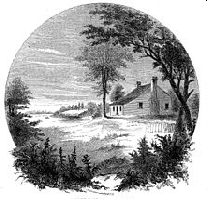 xxxxxWashington was born at Wakefield Farm, Westmoreland County, Virginia (illustrated). His family was well connected locally, and known for its pride and tradition. After his father's death in 1743, he moved to Mount Vernon, a large estate in Fairfax County, where Lawrence, his eldest half-
xxxxxWashington was born at Wakefield Farm, Westmoreland County, Virginia (illustrated). His family was well connected locally, and known for its pride and tradition. After his father's death in 1743, he moved to Mount Vernon, a large estate in Fairfax County, where Lawrence, his eldest half-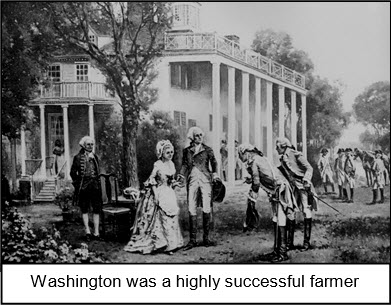 the French over the right of settlement in the Ohio Valley, but his baptism under fire was hardly a success. His small, untrained force was besieged in Fort Necessity and forced to surrender. However, appointed as a colonel in August 1755 to command the Virginia militia, he defended the state well during the French and Indian War (an off-
the French over the right of settlement in the Ohio Valley, but his baptism under fire was hardly a success. His small, untrained force was besieged in Fort Necessity and forced to surrender. However, appointed as a colonel in August 1755 to command the Virginia militia, he defended the state well during the French and Indian War (an off-
xxxxxIn January 1759 he married a rich widow, Martha Custis, and became one of the wealthiest and influential men in the state. In the previous year he had been elected to the House of Burgesses, the local legislature, and it was here in the late 1760s and early 70s that he began to voice his support in the dispute brewing between the colonists and the British government. It was on the strength of this opposition to British policies that in 1774 he was elected as one of the state's delegates to the first Continental Congress. We are told that a this point, anticipating the possible course of events, he began to buy arms and ammunition for the defence of Virginia. At the Second Continental Congress in 1775, with a clash of arms having already taken place at Lexington and Concord, he was unanimously appointed commander in chief of the colonial armies, taking over his post in June of that year. He faced a formidable task. Whilst the colonies were now loosely united in a common cause, they could muster but a makeshift military force. During the next six years he had to face up to treachery amongst his own generals -
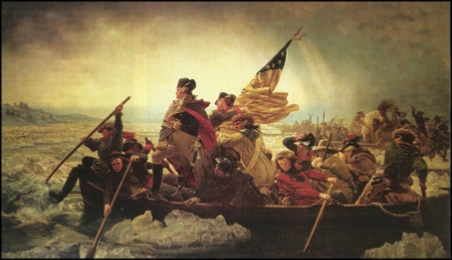 xxxxxHe met with marked success at the opening of his campaign. Having gained occupation of the Dorchester Heights overlooking Boston, and brought up cannon from Fort Ticonderoga -
xxxxxHe met with marked success at the opening of his campaign. Having gained occupation of the Dorchester Heights overlooking Boston, and brought up cannon from Fort Ticonderoga -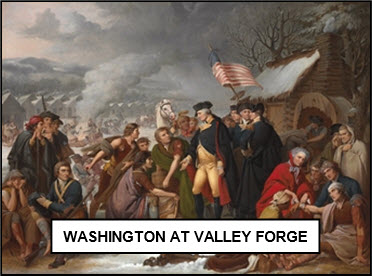 bb, that an attempt was made by some members of the Continental Congress and a number of his senior army officers -
bb, that an attempt was made by some members of the Continental Congress and a number of his senior army officers -
xxxxxAnd despite the atrocious conditions, the months at Valley Forge were put to good use. A training programme was introduced to instil discipline among the men and improve their skill at arms. Furthermore, news from another front raised hopes. In October of 1777 an entire British army, moving south from Canada and having been constantly harassed by guerrilla tactics, was soundly defeated at two battles near Saratoga and forced to surrender. These victories brought the French into the conflict -
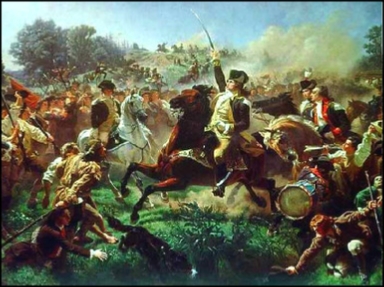
xxxxxIn response, the British pulled out of Philadelphia to concentrate their forces in the north, and Washington was able to wreak havoc among their army on the march, particularly at Monmouth, a battle in which his personal intervention helped save the day (illustrated). Then taking up his position at White Plains, just outside New York, Washington waited for the inevitable showdown. It came in 1781 when General Charles Cornwallis (1738-
xxxxxBut with a squadron of 36 French ships blocking the harbour, these reinforcements never came. In the meantime Washington hurried south, meeting up with the French, and laid siege to Yorktown. Unable to break out on land, and with no escape by sea, Cornwallis was forced to surrender in October 1781. The war was to drag on for another two years, but the fighting was virtually over. On the 19th October, the day of the formal surrender, Washington informed Congress of the victory, giving credit for the success “to every Officer and Soldier in the combined Army in this Occasion”. A few days later he resigned as commander-
xxxxxWithout doubt, Washington played a pivotal role in the ultimate success of the American rebellion. Few men of his time, if any, were equal to his discipline, determination and sense of duty, nor his ability to inspire his men and fight for their welfare. It was only by such attributes that he kept the Continental army together, so often were his men deprived of the basic requirements of a fighting force. And nowhere can his sheer courage, dedication and persistence in adversity be seen than during the dreadful winter months at Valley Forge.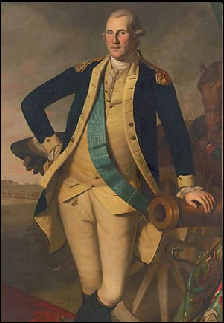
xxxxxAs a military man he was not a great tactician. He made a number of serious blunders -
xxxxxFollowing the settlement at the Peace of Paris in 1783, Washington retired to Mount Vernon in Virginia, but four years later he re-
xxxxxIncidentally, thexfamous and highly romanticized painting showing Washington crossing the Delaware (illustrated above) is by the German-
xxxxx...... George Washington was of British descent. His great-
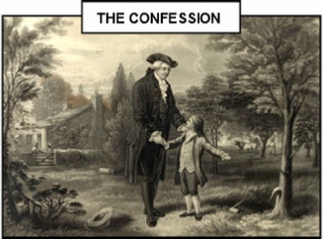 xxxxx...... Sadly, the famous story about the young George hacking down a cherry tree and then confessing to the deed -
xxxxx...... Sadly, the famous story about the young George hacking down a cherry tree and then confessing to the deed -
Acknowledgements
Washington: miniature by the British/American painter Robert Field (1769-
G3a-


